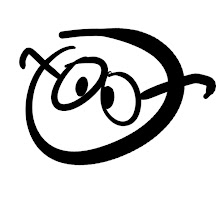INTRODUCTION by Richard Howard.
In Philp Guston’s late work, of roughly his last 12 years of career, there is “hilarious crudity,” “abrupt and melancholy allegories…”
[NOW ROSS FELD:]
During the 1950s and early 60s, Guston’s work looked as a forced abstraction, as Feld and the artist himself knew. Guston scorned color-field paintings: they were “over-the-couch things.”
In 1962 he has a retrospective at the Solomon R. Guggenheim. Shortly thereafter he comes at a dead end; he feels “self-dissatisfaction,” then enacts an “abdication.” In 1967 came the first forays into a new territory; in 1970 he opens his first exhibition of the new style at the Marlborough gallery. 1974, he quits Marlborough & signs with the McKee gallery.
Guston said his works were allegories. [Much of his later painting are a series of self-portraits.]
The later Guston work had “a shaggy, even goofy friendliness, a lack of ostentation and argument.” It contains “philosophical humor and self-mockery.” They are “raw” works, “…delirious congregations of imperfections,” a “threatening carnival.” His paintings had “profound, even crude unmannerliness and obverse beauty.” He painted a “strange, funky imagery.” In his work, shadows lengthen in two directions, ladders stand by themselves – all of which is enigmatic. The mood he suggests is “like Shostakovich’s heavy chords.” In Leo Steinberg's Michelangelo's Last Paintings there are examples – enjoyed by Guston – of the “uninviting and bleak,” the “void of grace, dissonant in composition and color.”
Guston wrote: “Advice to myself – /Do not make laws. / [...] You do not possess a style – […]” Guston saw his own work “beyond style, influence, and even aesthetics.”
His paintings sometimes express grief but not sentimentality. Cézanne and Morandi painted immanent, self-contained thingness; not Guston.
Abstract Expressionism is Protestant; its painters “made external works that testified to inner Faith,” purity, truth, essence. But Guston mistrusted essences. Nevertheless, Guston isn't Duchampian/Pop either. Guston is tragic, even when hillarious. Guston is bothered by maximalism and by great dogmas like Mondrian’s. He loved ambiguity like de Chirico’s.
APPENDIX.
“…Feld saw in these ‘cartoons for the chaos’ neither social satire nor a self-indulgent excursion into comic-strip crudity.” Feld saw in Guston's 1970s work something akin to Beckett.
(Look for the 1978 article Guston’s ‘Wharf’ by Ross Feld. Guston loved it.)
Feld to Guston: “If the paintings were merely fantastic, punishing, and grotesque, I wouldn't have been quite as disturbed.” “The pictures seem to ask: what if you jumped off the world and didn't find just nothing? Suppose you found another something? […] Especially if the other-sided something was nothing you could immediately – or perhaps ever – classify.” Guston adored these words.







